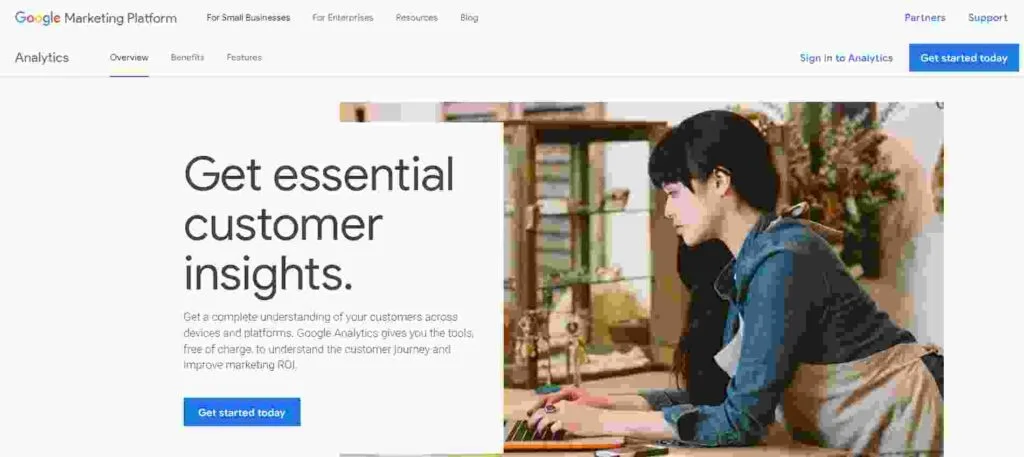In the intricate world of digital marketing, understanding your audience’s desires is the cornerstone of success. More than ever, it’s not just about which keywords your audience is typing into the search bar, but the ‘why’ behind those searches. This is where user intent comes into play. User intent, the underlying goal a user aims to achieve with their search query, has become an essential factor in search engine optimization (SEO).
As search algorithms become more sophisticated, understanding and aligning with this intent is crucial for brands to stay relevant and visible. This article will provide a deep dive into the world of user intent, its impact on keyword targeting, and actionable strategies to enhance your digital footprint effectively.
Understanding the Basics of User Intent
At its core, user intent refers to the motive behind a search query. It’s the reason someone goes to a search engine. Are they looking to buy something? Are they trying to find a specific website? Or, are they just trying to learn more about a topic? By understanding the different types of intent, businesses can better align their content and strategies to meet users right where they are.
Why user intent is crucial for modern SEO
As search engines strive to deliver the best possible results for their users, they prioritize content that matches the searcher’s intent over simple keyword matches. Google, for instance, has made tremendous strides with its algorithms, like BERT, to understand the context behind search queries. This shift means that the old tactics of keyword stuffing or one-size-fits-all content strategies are becoming obsolete.
Today, SEO success is determined by how well a website’s content aligns with user intent. Therefore, brands that take the time to understand and optimize for user intent have a competitive edge, seeing improved organic rankings, increased traffic, and better conversion rates.

Four Categories of Search Intent
1. Informational
- Users seeking information.
Informational intent is when a user is looking for answers or wants to learn about something. Their queries might begin with “how to,” “what is,” or “why does.” For example, “how to tie a tie” or “what is blockchain technology.”
- Example keywords and how to identify them.
These queries often contain specific phrases like “tips,” “ways to,” “methods,” and “reasons why.” Tools like Google’s People Also Ask box can be instrumental in identifying common informational queries related to a topic.
2. Navigational
- Users looking for a specific website or page.
When users already have a particular site in mind but might not remember the exact URL, they turn to search engines. Queries like “Facebook login,” “BBC news,” or “Amazon customer service” indicate navigational intent.
- Tactics to capitalize on these queries.
Brands should ensure that their website is easily accessible and navigable. A clear site hierarchy, breadcrumbs, and a robust internal linking structure can aid users in finding what they’re looking for quickly.
3. Transactional
- Users ready to make a purchase or use a service.
When a user is prepared to take action, their search queries often reflect this readiness. They might search for “buy running shoes online,” “book Paris flight,” or “order pizza near me.”
- Strategies to optimize for transactional intent.
Ensuring your product pages are SEO-optimized, using schema markup for product listings, and having a clear and straightforward checkout process can enhance the experience for users with transactional intent.
4. Commercial Investigation
- Users comparing products/services before a final decision.
Before making a purchase, users often do their research. They might look up “best smartphones 2023,” “top-rated coffee machines,” or “SaaS platforms comparison.”
- Tips on targeting these comparison shoppers.
Offering comprehensive comparison guides, showcasing user reviews, and highlighting USPs can help sway users in the consideration phase.
Role of SERPs in Deciphering User Intent
Search engine results pages (SERPs) are treasure troves of insights when it comes to understanding user intent. By analyzing which pages rank for a specific keyword or phrase, you can infer what content search engines believe best satisfies the searcher’s intent. For instance, if a query results in a plethora of how-to guides, it’s evident the search intent is primarily informational.
Leveraging featured snippets, “people also ask,” and other SERP features
Featured snippets provide direct answers to user questions and typically align with informational intent. The “people also ask” box offers insight into related queries, expanding our understanding of what information users might be seeking. Similarly, product carousels or local packs can indicate a more transactional or local search intent. By observing these SERP features and optimizing for them, businesses can capture a broader audience aligned with their content.

Incorporating User Intent into Keyword Research
Tools and methods for uncovering intent-driven keywords
In the age of intent-driven SEO, traditional keyword research tools need to be paired with platforms that provide insights into user intent. Platforms like AnswerThePublic or SEMrush’s Keyword Magic Tool allow you to dive deeper into the questions people ask related to your industry or products. This can give you a leg up in crafting content that directly addresses user concerns or curiosities.
The role of long-tail keywords in tapping into specific user intents
Long-tail keywords—phrases that are longer and more specific—often reveal a lot about a user’s intent. For example, “shoes” might be ambiguous, but “best winter shoes for hiking” has a clear transactional and informational intent. By targeting these precise queries, businesses can cater to niche audiences, often resulting in higher conversion rates.
Crafting Content Based on User Intent
Different intents demand varied content formats. Informational queries might be best served with in-depth articles or how-to guides, while transactional queries would lead to product pages or e-commerce platforms. By aligning the content type with the intent, brands ensure they’re offering the most relevant and valuable content to searchers.
Tips to ensure content fulfills users’ search goals
- Focus on Value: Always prioritize providing genuine value over selling.
- Answer the Query Directly: If a user asks a question, provide a clear answer early on, then delve into details.
- Use Visuals: Infographics, videos, and images can break up text and cater to different learning styles, enhancing user engagement.
Importance of the Sales Funnel in User Intent Targeting
Every step of the sales funnel—from awareness to consideration, decision, and advocacy—has a corresponding search intent. In the awareness phase, users typically have informational intent as they seek knowledge. As they progress to consideration, they engage in commercial investigation, comparing offerings. Transactional intent surfaces during the decision phase as users look to make a purchase. Recognizing this alignment enables brands to craft strategies that guide users smoothly from one stage to the next.
Strategies for nurturing leads based on their search intent
Tailored content is the key to nurturing leads. For informational seekers, provide comprehensive guides or webinars. For those in the comparison phase, detailed product comparisons or customer testimonials can be influential. Transactional users benefit from clear CTAs, discounts, or loyalty programs. By catering to users’ specific intents, you foster trust, building a foundation for long-term customer relationships.

Using Google Analytics to Measure User Intent
Google Analytics offers invaluable insights into user behavior. A high bounce rate could signal a mismatch between user intent and your content. Conversely, increased pages per session and longer average session durations generally indicate your content aligns well with users’ search goals, leading them to explore more of your site.
Adapting strategies based on analytics feedback
Pivoting based on data is paramount. If a piece of content has a high exit rate, it might be failing to address user intent. Consider revising or expanding it. Also, observe the user flow to understand the paths users take. If they consistently drop off at a particular point, there might be a disconnect you need to address.

Adjusting On-Page SEO Elements for User Intent
Crafting meta titles and descriptions aligned with intent
Meta titles and descriptions are users’ first glimpses into your content from SERPs. Ensure they clearly convey the value and relevance of your page. For instance, a meta title like “Buy Handcrafted Leather Boots Online” aligns with transactional intent, signaling users can make a purchase.
User intent-focused internal linking strategies
Internal links guide users through your site. For those with informational intent, link to in-depth guides or related articles. For transactional users, consider linking to related products or reviews. Tailoring your internal linking strategy to user intent helps keep users engaged and moving smoothly through your site.
Using Paid Advertising to Test User Intent Hypotheses
Setting up A/B tests to gauge the effectiveness of intent-based targeting.
Paid advertising, notably Pay-Per-Click (PPC) campaigns, offers a rapid method to test user intent hypotheses. By setting up A/B tests, businesses can experiment with different keyword targets and ad copies, evaluating which resonates most with the intended audience. For example, if you’re uncertain whether a keyword signals transactional or commercial investigation intent, two different ad designs—one emphasizing purchasing and another focusing on product comparisons—can provide clarity based on their performance.
Analyzing pay-per-click (PPC) campaigns for insights into user behavior.
PPC analytics offer a treasure trove of data on user behavior. Metrics like Click-Through Rate (CTR), Conversion Rate, and Cost Per Acquisition (CPA) give insights into the alignment of user intent with your ads. High CTR but low conversion might suggest the ad resonates, but the landing page fails to meet the user’s intent. Continuous analysis and iteration based on these insights enable advertisers to refine their targeting and increase the efficiency of their campaigns.

User Experience (UX) and Its Interplay with User Intent
The role of site design, load times, and mobile responsiveness
User intent doesn’t operate in isolation. Once a user lands on your site, their experience, influenced by design, load times, and mobile responsiveness, plays a massive role in retaining them. A site optimized for mobile users, for instance, ensures that the growing demographic of mobile searchers finds content that matches their intent in a format they prefer. Slow load times can deter even the most eager users, nullifying efforts in targeting their intent.
Adjusting UX elements to cater to different user intents
Adapt your site’s UX based on intent. Informational seekers might appreciate a clean, blog-style layout with easy-to-find references. In contrast, transactional users expect a streamlined checkout process. By understanding and catering to what each user segment seeks, businesses can create a holistic, intent-driven user experience.
Challenges in Interpreting User Intent
Interpreting user intent isn’t static. As cultural, technological, and market trends shift, so do the ways users search and their underlying intentions. For instance, voice search, spurred by the rise of digital assistants, has brought more conversational queries, subtly altering user intent in many sectors.
Strategies for staying ahead of shifts in intent
Staying updated requires continuous research. Regularly analyzing search query reports, staying abreast of industry trends, and even directly soliciting feedback from your audience can all help businesses anticipate and adapt to changes in user intent.
Wrapping it up
In the intricate dance of digital marketing, understanding user intent is akin to understanding the rhythm. When businesses can anticipate, understand, and cater to what users genuinely seek, they don’t just improve their SEO rankings; they build lasting relationships with their audience. From the initial keyword research to crafting content and ensuring a seamless user experience, every step should resonate with the user’s intent. By continuously adapting, learning from successes (and failures), and always prioritizing the user, businesses can create a harmonious symphony of content that truly resonates.
Read Next:
- How to Use Behavioral Email Segmentation: The Definitive Guide
- The Importance of Site Structure in SEO
- How to Create a Social Media Marketing Plan: The Complete Guide
- How to Use Social Media Management Tools for Brand Monitoring
- How to use Mautic: An Explainer






















Comments are closed.